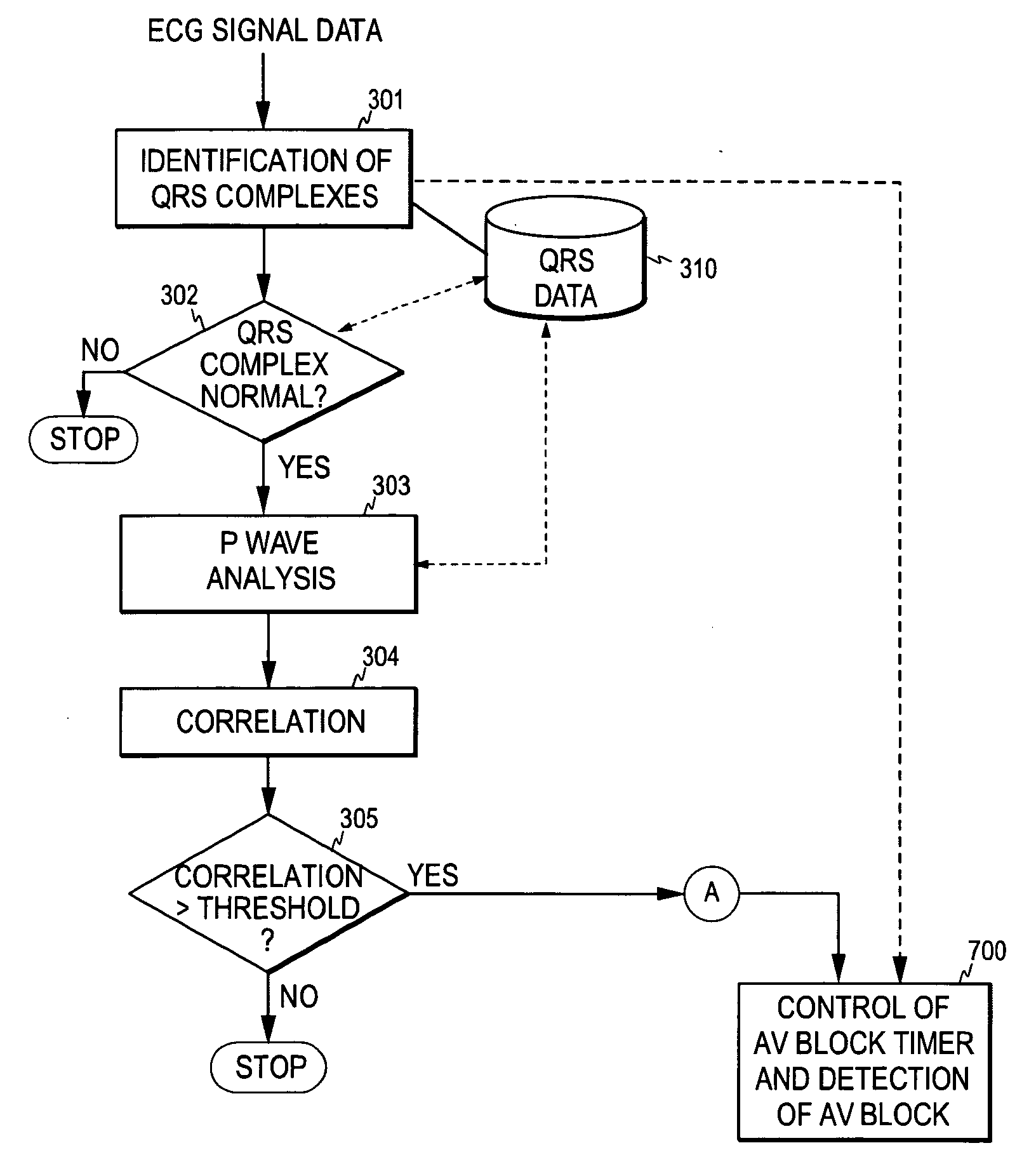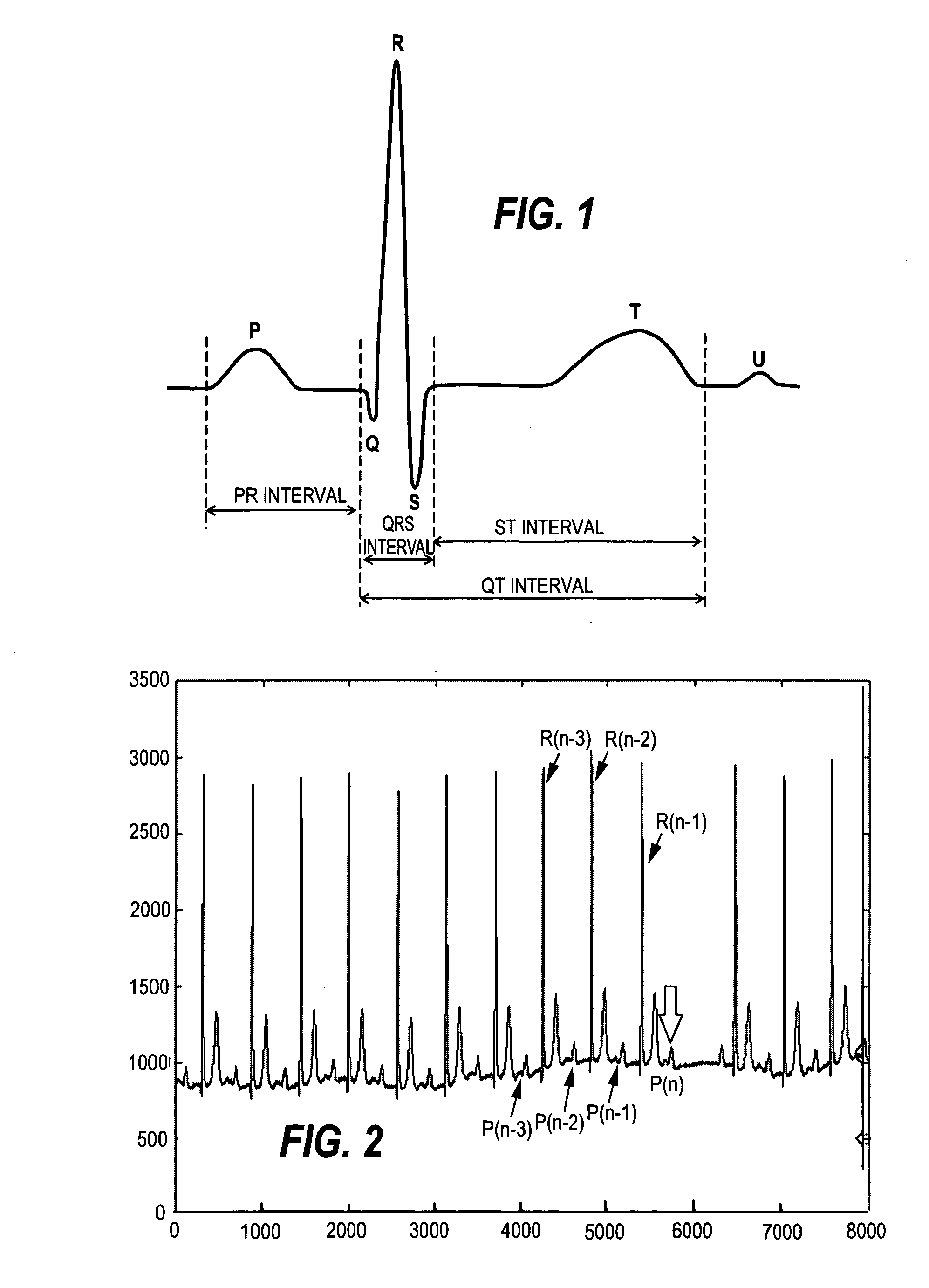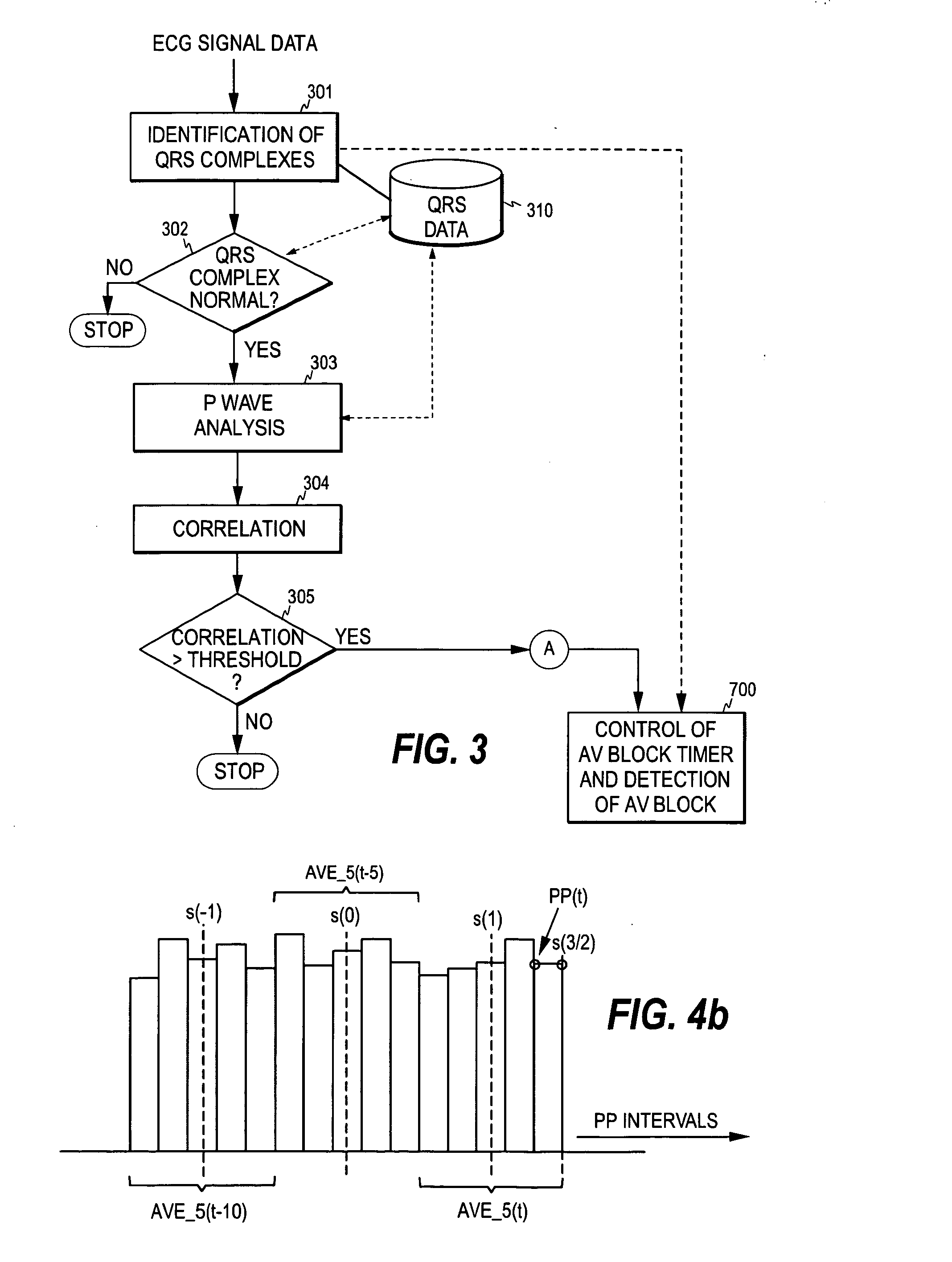Monitoring of atrial activation
a technology of atrial activation and monitoring, applied in the field of atrial activation monitoring, can solve the problem of av block detection and other problems
- Summary
- Abstract
- Description
- Claims
- Application Information
AI Technical Summary
Benefits of technology
Problems solved by technology
Method used
Image
Examples
Embodiment Construction
[0029] As discussed above, during a normal sinus rhythm the P waves are conducted to the ventricles, i.e. each P wave P(i) is followed by a QRS complex R(i). Therefore, a P wave can normally be detected by first detecting the subsequent QRS. However, since in the case of an AV block a P wave may not be followed by a QRS complex, the relevant P wave cannot be detected based on QRS detection. In the following, the said relevant P wave is denoted P(n). Therefore, in order to detect an AV block, the relevant P wave needs to be detected independently of the detection of the QRS complex in the same cardiac cycle.
[0030] In the present invention, the above facts are utilized by storing information about the P waves detected during normal sinus rhythm. This information is used to predict the moment of occurrence and the morphology of the relevant P wave P(n). Here, morphology refers to the shape and magnitude of the P wave. Since information about a certain number K of previous P waves (P(n...
PUM
 Login to View More
Login to View More Abstract
Description
Claims
Application Information
 Login to View More
Login to View More - R&D
- Intellectual Property
- Life Sciences
- Materials
- Tech Scout
- Unparalleled Data Quality
- Higher Quality Content
- 60% Fewer Hallucinations
Browse by: Latest US Patents, China's latest patents, Technical Efficacy Thesaurus, Application Domain, Technology Topic, Popular Technical Reports.
© 2025 PatSnap. All rights reserved.Legal|Privacy policy|Modern Slavery Act Transparency Statement|Sitemap|About US| Contact US: help@patsnap.com



